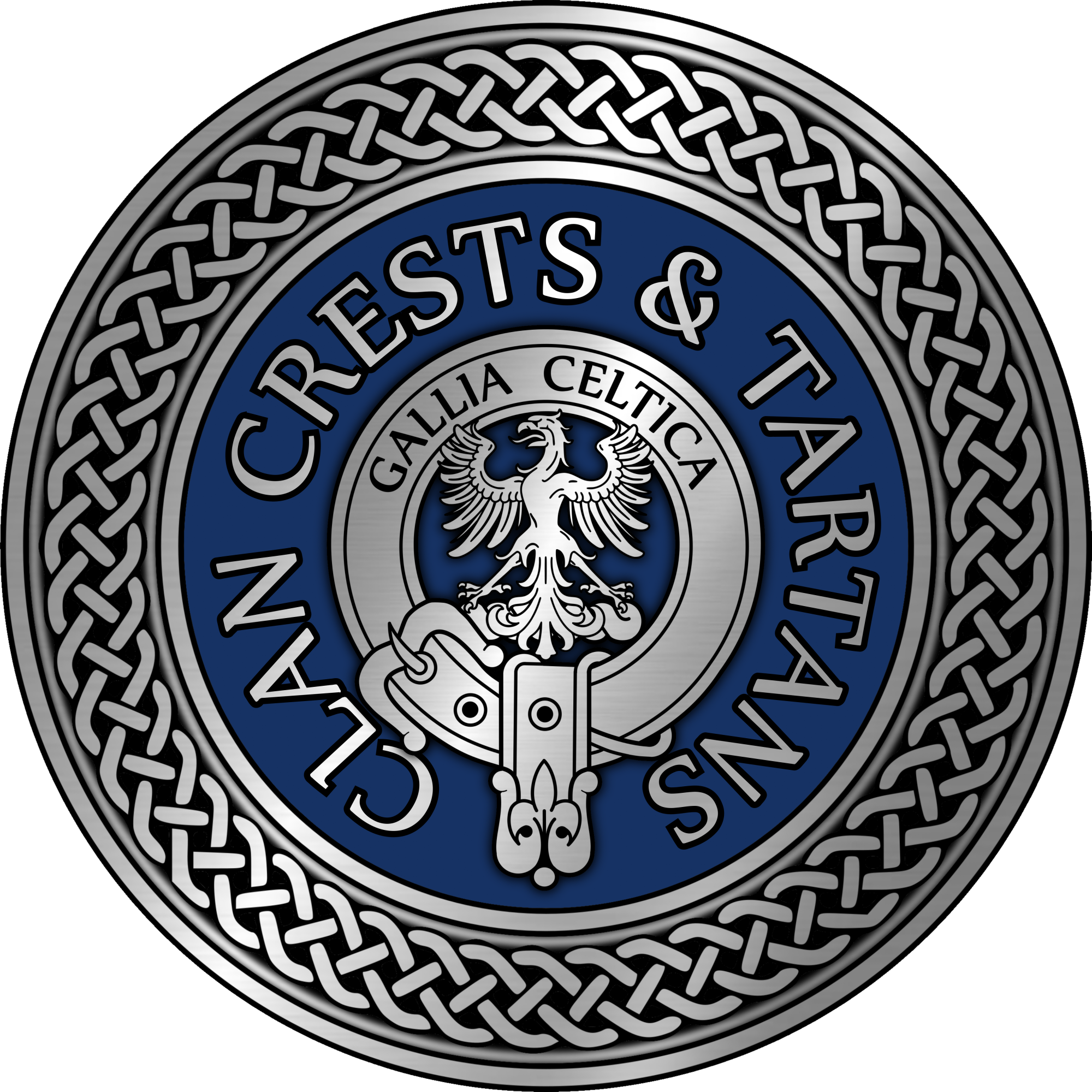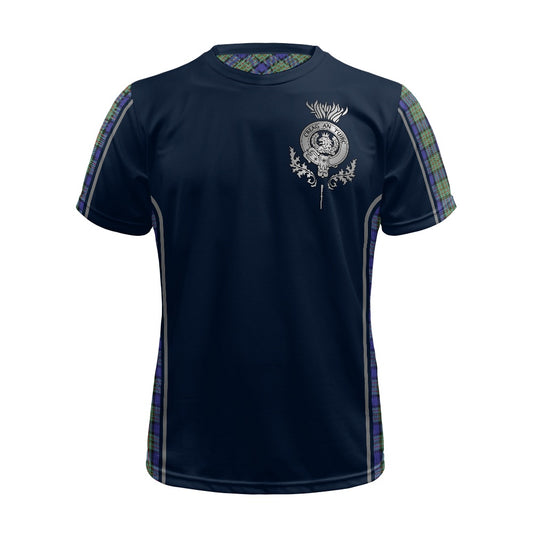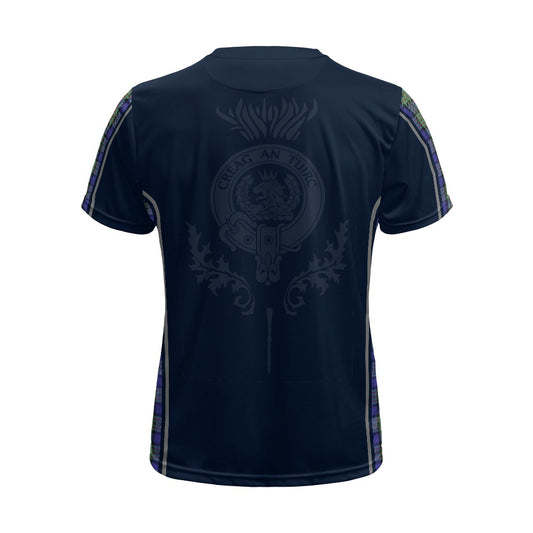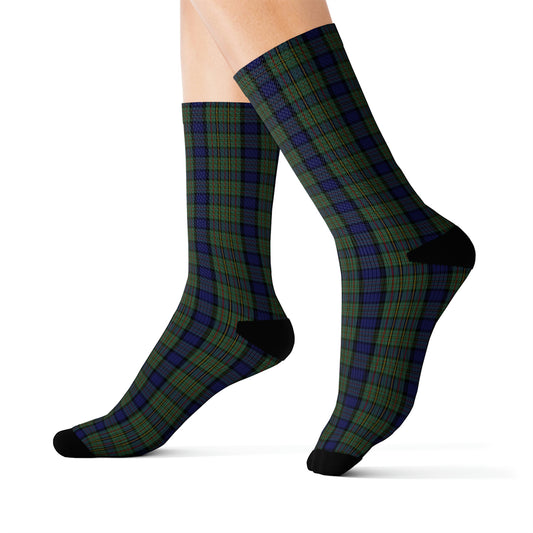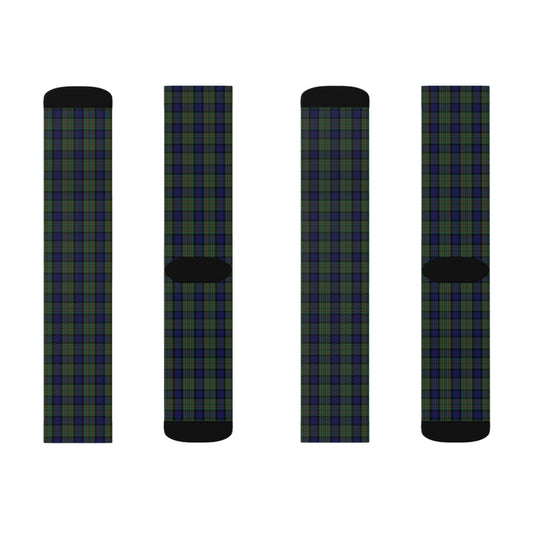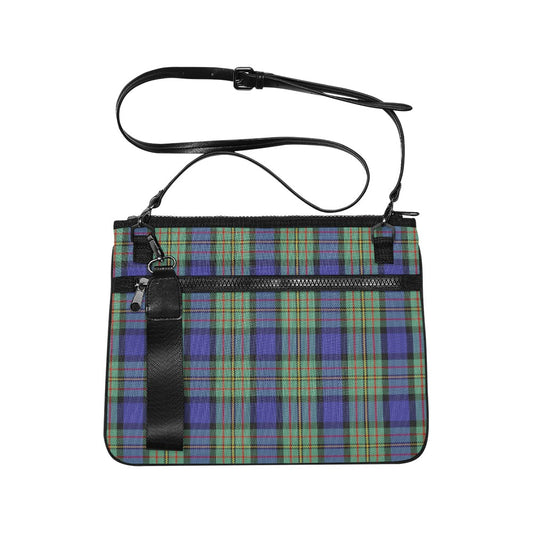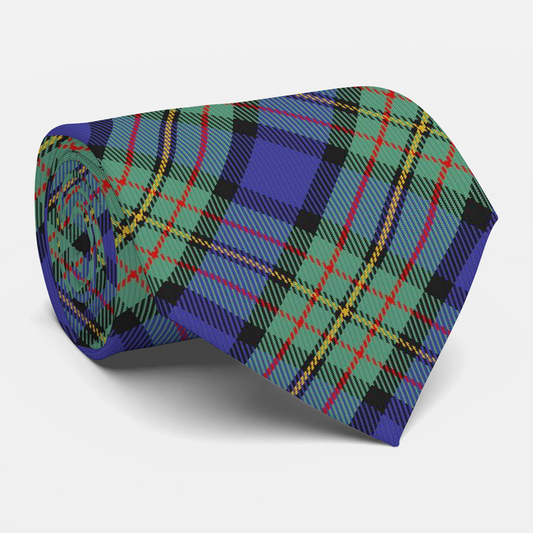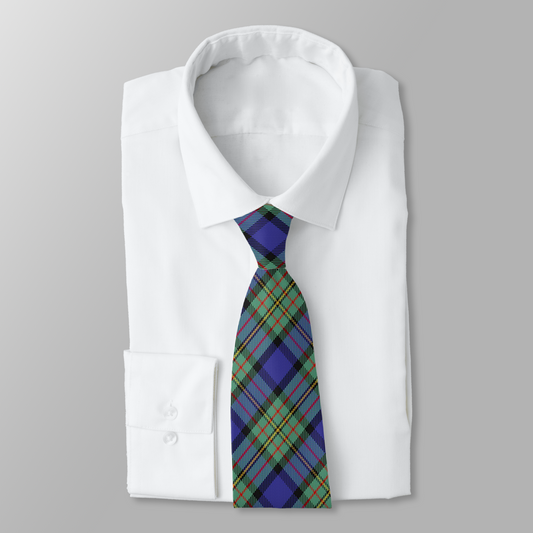Scots Gaelic: Cinneadh MacLabhrainn
Clan MacLaren is a Highland Scottish clan. Traditional clan lands include the old parish of Balquhidder which includes the villages of Lochearnhead and Strathyre, and is about 18 miles (29 km) long and 7 miles (11 km) broad, spanning 54,675 acres (22,126 ha), long known as "Maclaren Country".
Profile
Crest: A lion's head erased Sable crowned with an ancient crown of six (four visible) points Or, between two branches of laurel issuing from the Wreath at either side of the head both Proper.
Motto: Creag an Tuirc (The boar's rock)
Slogan: Creag an Tuirc (The boar's rock)
Plant Badge: Laurel
Region: Highlands
District: Perthshire
Historic Seat: Balquhidder, Strathearn
Seat: Kirkton Farm, Balquhidder
Chief: Donald MacLaren of MacLaren & Achleskine, 25th Chief of the Name and Arms of MacLaren
Clan Relationships
Branches
MacLaren of Achleskine (Chiefs)
MacLaren of Ardveche
MacLaren of Invernenty
MacLaren of Struthill
MacLaurin of Tiree
Septs
M'Laren, Maclaren, MacLaurin, MacLauren, McLaren, McLaurin, McLeran, McLerran, McLaran, McLoran, McClaran, McClarin, McClaren, MacClaren, McClarence, McLarence, McLaurence, McLawrence, McClernon, McLarren, Lawrence, Laurence, Lawrin, Law, Lawson, Lawton, Low, Lowe, Lawrie, Laurie, Lowery, Lowry, Lowrey, Lowson, Faed, Paterson, Patterson, Pattison, Peterson, Patrick, McPhater, MacPatrick, MacRory, McCrory, McGory, MacRuari, MacGrory, MacIntyre, Wright, McFater
Allied Clans
Stewart of Appin
Rival Clans
MacGregor, Buchanan, MacFarlane, MacDonald of Keppoch, Campbell
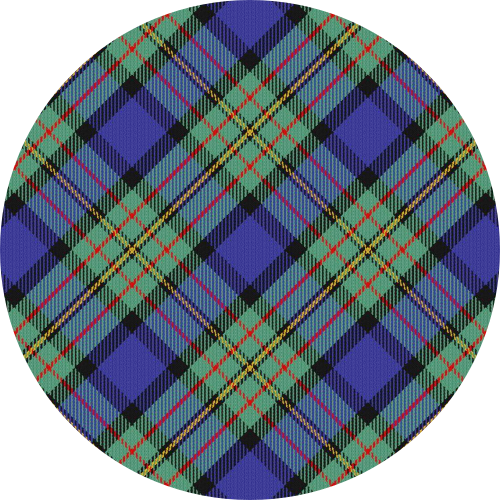
Clan Tartan
Shop MacLaren TartansClan History
The chiefly house of MacLaren is said to be descended from Loarn mac Eirc, believed to be a ruler of the kingdom of Dál Riata. In Scottish Gaelic the clan name is Clann Labhruinn. However the eponymous founder of the MacLarens is generally given as Laurence, Abbot of Achtow in Balquhidder, who lived during the thirteenth century. Balquhidder was part of the ancient princedom of Strathern whose heraldry is shown in the heraldry of the MacLarens. The heraldry borne by the clan suggests that they descend from a cadet branch of the dynasty of the Earls of Strathearn.
There is also a tradition that the MacLarens fought at the Battle of the Standard under Malise I, Earl of Strathearn, for David I of Scotland.
Wars of Scottish Independence
Three names identified as belonging to the Clan MacLaren are found in the Ragman Rolls of 1296, giving allegiance to Edward I of England. These are Maurice of Tiree, Conan of Balquhidder and Leurin of Ardveche. During the Wars of Scottish Independence it is probable that the Clan MacLaren fought for Robert the Bruce at the Battle of Bannockburn, under the standard of Malise, Earl of Strathearn in 1314, where the English were defeated. The last Gaelic Earl of Strathearn was deprived of his title in 1344 when the MacLarens came under pressure from their more powerful neighbours.
15th & 16th Centuries
In 1468 the Clan MacLaren fought in support of the Clan Stewart of Appin at the Battle of Stalc. The MacLarens also fought alongside the Stewarts of Appin at the Battle of Black Mount in 1497 or 1498. Balquhidder passed into the hands of the Crown and in 1490 a Stewart was appointed the royal ballie. (see: Stewart of Balquhidder). Then in 1500 James IV of Scotland granted the lordship to Janet Kennedy, his mistress, and the chief of the Clan MacLaren found that his lands had become part of another barony. Balquhidder would later pass to the Clan Murray of Atholl.
The persecution of the Clan Gregor by the Clan Campbell drove the MacGregors from their own lands into Balquidder where the Clan MacLaren lacked the power to stop them. As a result, the MacGregors plundered the lands of the MacLarens killing eighteen MacLaren households; men, women and children, and taking over the homesteads of those they killed. The MacLarens appealed to the Campbells for help, but they demanded that the MacLarens acknowledge them as their feudal superiors as the price of protection. However it appears that the Crown continued to regard the MacLarens as an independent clan as they are listed in the Acts of Parliament in 1587 and 1594, for the suppression of unruly clans.
MacLaren Collection
-
Clan MacLaren Crest & Tartan Football Shirt
Regular price $29.99 USDRegular priceUnit price per -
Clan MacLaren Tartan Socks (Darker)
Regular price $14.95 USDRegular priceUnit price per -
Clan MacLaren Tartan Kilt Clutch Bag
Regular price $49.99 USDRegular priceUnit price per -
Clan MacLaren Tartan Necktie
Regular price $39.99 USDRegular priceUnit price per
Civil War and Jacobite Uprisings
During the Scottish Civil War the Clan MacLaren fought for James Graham, 1st Marquis of Montrose, in support of Charles I of England at the Battle of Inveraray, Battle of Inverlochy (1645), Battle of Auldearn, Battle of Alford and the Battle of Kilsyth.
1715 Jacobite Rising
During the Jacobite rising of 1715 the Clan MacLaren fought at the Battle of Sheriffmuir in support of the Jacobite cause.
1745 Jacobite Rising
During the Jacobite rising of 1745 the Clan MacLaren fought in support of the Jacobite cause at the Battle of Prestonpans and the Battle of Falkirk Muir where they were victorious on both occasions. The Clan was also present at the Battle of Culloden in 1746 where the Jacobite army met defeat. Donald MacLaren of Invernentie served in the role of Captain in the Appin Regiment. He and the Appin Regiment were positioned in the center of the first line to the left of Lord George Murray's Atholl Brigade. He was injured at Culloden but escaped the field and rode back to Balqhidder and then on to Leny where he was injured during a skirmish with the Perthshire Militia on the 19th of July, 1746. MacLaren was taken into custody along with Major David Stewart of Ballahallan, Captain Malcolm MacGregor of Concour, Sergeant King alias Macree (from Lord Murray's regiment) and three privates. These men were transported to Stirling Castle and imprisoned. He was treated by the prison physician for his wounds on the 20th of July and subsequently, on September 3, 1746, bound to a dragoon for transfer to Carlisle to stand trial for treason.
During the course of that transport MacLaren was freed or freed himself (the escape has been related both ways) and escaped by throwing himself off a cliff called the Devil's Beef Tub near Moffet. Although the King's dragoons fired after him, the mist hid his movements and his escape was successful. He remained in hiding as a fugitive in Balquhidder until the amnesty of 1757.
There were McLarens in the other regiments as well during the Jacobite rising of 1745:
Lieutenants
Alexander McLaren, younger of East Haugh, Pitlochry, Strath Tay; Duncan McLaren, Brewer, Wester Invernentie, Balquhidder; Orrott McLaren, Uncle to Younger of East Haugh, Pitlochry, Strath Tay
Other Ranks
Donald McLaren, Tenant, Dowally, Strath Tay; Duncan McLaren, Perthshire 3rd Battalion; James McLaren, Servant to Haugh of Killmorich, Strath Tay; John McLaren, Cottar, Rotmell, Strath Tay; Robert McLaren.
MacLaren Collection
-
Clan MacLaren Crest & Tartan Football Shirt
Regular price $29.99 USDRegular priceUnit price per -
Clan MacLaren Tartan Socks (Darker)
Regular price $14.95 USDRegular priceUnit price per -
Clan MacLaren Tartan Kilt Clutch Bag
Regular price $49.99 USDRegular priceUnit price per -
Clan MacLaren Tartan Necktie
Regular price $39.99 USDRegular priceUnit price per
